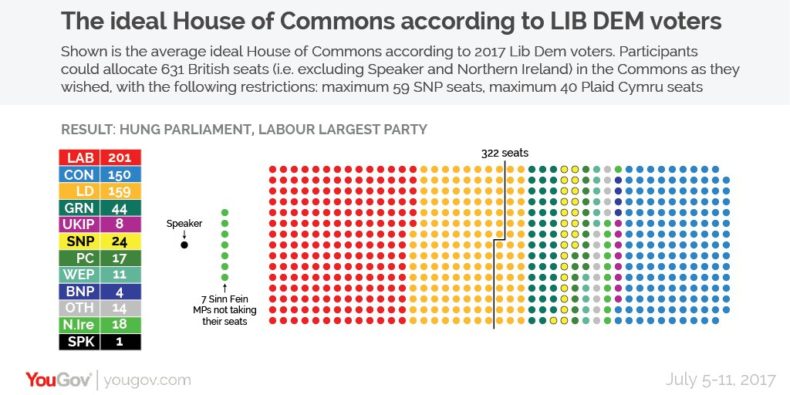How the 2017 general election was nearly far, far worse for the Liberal Democrats
The 2017 general election was not exactly a glorious episode for the Liberal Democrats. For a detailed assessment of the Lib Dem performance, see my analysis for Lib Dem Newswire but in brief it was a matter of survival rather than significant recovery.
It was, however, very close to being far, far worse. Even just a smidgen more of progress from some combination of Lib Dem, Labour and the other parties, depriving the Conservatives of a few extra seats, would have meant that the support of the DUP was not sufficient to re-install Theresa May in power (well, in office at least).
Not even 10 seats more would have been required between the mainland opposition parties to mean that, even with Sinn Fein abstaining and the Independent Unionist backing the Conservatives, a deal with the DUP would not have made up the numbers.
And then what would the Liberal Democrats have done in a properly hung Parliament? Or, more precisely, what would Liberal Democrat voters have done in response to what the Liberal Democrats did? Because, as in previous Parliaments, the preferred government of those who voted Lib Dem varied greatly. Some wanted the Lib Dems in power, some wanted the Tories in power (but voted Lib Dem to beat another party), some wanted Labour in power (but voted Lib Dem to beat another party) and so on.
Hence this YouGov polling:

The reaction this polling has got (‘ooh look at those funny Lib Dems who didn’t even want to win themselves’) misses the point. It’s not that Lib Dems didn’t want the Lib Dems to win. Rather, it’s that many of the people who vote Lib Dem do so for reasons other than seeing themselves as a Lib Dem.
What underpins polling results such as this – and it’s not that dramatically different from similar polling for previous general elections – is how small the Liberal Democrat core vote is. It is good that the Lib Dems can attract a varied coalition on top of the party’s core vote. But when your core vote is so small then that coalition on top makes up a dangerously large proportion of your overall vote.
Dangerously large because faced with a tough political choice that involves, to some extent, choosing sides between Labour and the Conservatives, whatever the party does it will lose a huge chunk of its support.
That’s why in the spring and summer of 2010 the Lib Dem poll rating cratered before tuition fees, before welfare reform and before changes in the NHS. It’s why a 2005 hung Parliament, choosing between Iraq War Tony Blair and immigration dog whistling Michael Howard would have been just as much of a political poison chalice for Charles Kennedy to face as the political choice in 2010 was. And it’s why the 2017 general election was nearly far, far worse for the Lib Dems. In the party’s weakened 2017 state, even if a slightly stronger version with a handful of more MPs, the party would have been in an extremely perilous position. Starting from a much stronger base in 2010, the party was still nearly wiped out. Imagine what it would have been like starting from a far weaker base.
There is, however, a solution. It’s to build a larger core for the party, so that more of the party’s support is based on wanting the Liberal Democrats to win outright.
That is the way to have durable support which can survive politically tough times. And that is the way to build up a much larger and stronger party, instead of having to work so hard just to stay still in order to keep on winning over and retaining the support of people who aren’t that keen on the Lib Dems winning anyway.
Here’s that plan on how to do it.
Leave a Reply